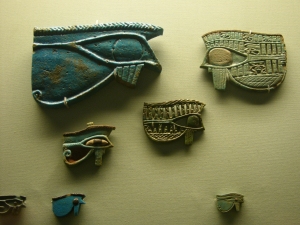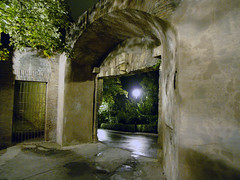Archive for July, 2012
An almost Greek symposium at the Malibu Getty

Malibu Getty Tasting of 4 wines created in clay amphorae in the ancient way. The wines came from Northern Italy, Sicily, Santorini (Greece) and Napa.
It wasn’t quite Mt. Olympus, but with very little imagination at the Malibu Getty on Jul 21, you could see yourself as a Greek aristocrat roaming the grounds of a lush villa, preparing for a wild drinking night at a classical Greek symposium (symposion).
At least, I had no problem projecting myself back 2500 years into Athena in Korinth, Greece with Hektor at Xenon’s pleasure villa by the sea.
We started out the evening at 5pm when the Getty Malibu Roman Villa Museum closed, and we gathered in the auditorium for a wonderful talk by historian Oswyn Murray of Oxford University. In the fine way that the Brits do so very well, Murray informed and entertained with his dry wit and rich display of images.
I felt great relief that the symposium I describe in Chapter 3 of Athena (The Egypt Trilogy) is right on target. There was a little dismay when Murray declared that food was served first and almost never during the Greek symposium (drinking party) itself. A conversation with him afterwards assured me that customs certainly varied, and that food could very well have been part of a symposium in Korinth in 200 BC Greece.
Whew! No need to rewrite Chapter 3 of Athena and remove all mention of “whole roast lamb appearing in an aromatic cloud of rosemary and garlic.”
Here’s a list of the wines served:
2001 Gravner Anfora Bianco Breg, Friuli-Venezia-Guilia, Italy
2009 Azienda Agricola COS Pithos, Sicily, Italy
2009 Del Dotto Clay Vessel Zinfandel, Napa Valley, California (see photo)
2010 Domaine Sigalas Asirtiko Athiri, Santorini, Greece

Unfortunately, our wine was not served in drinking cups such as this kylix on display at the Getty. Oh well…maybe in another life?
FEATURED EVENT SPEAKER: OswynMurray.org
The Isis story embellished with my photos
I’m posting a few of my Egypt photos here in hopes that I can bring the Isis story even more to life for my readers. Click on the image to enlarge. Look for more Sandra Gore photos in upcoming posts 🙂
Some of the following pictures are from one of my visits to Egypt. Some of the shots are from the British Museum in London, while a few precious ones are from the wonderful Petrie Museum just a short walk away. What a reservoir of history is the Petrie, and not just the ancient artifacts of pre-dynastic times – of which there is an abundant and rich display. The Petrie is a step back in time to the first days of true Egyptology.

When Isis sees wings painted on the lintels above her head, they might have looked something like this.

Example of painted open Papyriform capitals. Imagine the jewels colors when they were new! Taken at Ramesseum outside Luxor, Egypt.

Example of Aramaic writing. Aramaic was the lingua franca spoken by Eben, the Kabbalist and among the Persians soldiers. Isis spoke Aramaic with the General.

Here is the cow-eared goddess Hathor. The same face would have topped the pillars in the Hathor Temple. Known as the Queen’s Boat Hathor Head, British Museum.

Beaded “fishnet dress” similar to one Isis wore on her visit to the Temple of Min in Khent-min. Petrie Museum.

Glass vials like these might have held medicines, oils or the poisons designed to terminate Isis’ pregnancy – or even her life if captured. Petrie Museum.

Example of how hieroglyphs were painted in colors. This was taken in the tomb of the sons of Ramses III in the Valley of the Kings, Luxor Egypt

Sit-hathor might have worn a wig like this when she summoned Isis to the temple to tell her of the mission. Cairo Museum

Heavy gold bracelets like these adorned Ankh-hor’s arms when he feted Isis and Qeb-ha at the feast in Hermopolis. British Museum.

These eyes are made with faience, the process somewhat between ceramic and glass, of which the amulets were made that Isis traded for goods in the market. British Museum

Sacred Sistrum with head of Hathor that Isis might have used in the temple scene with the Crown Prince and Setne the Scribe. British Museum

Persian lion shield ornament. This would have adorned the leather vests of the Persian soldiers in the desert. British Museum.

A strand of polished Carnelian beads as might have been “strung on long ropes” in the marketplace of Khent-min. Petrie Museum.

Gold pieces from an Egyptian necklace. Most likely would have been strung with beads made from faience or semi-precious stone such as turquoise or carnelian. British Museum.

Faience and gold amulets, cartouche, pendant. Any of these would have been commonplace in Isis’ world. Petrie Museum.























